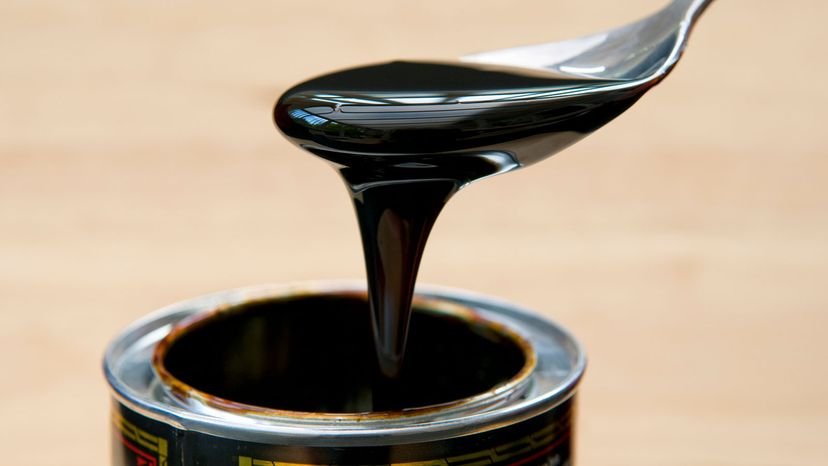
In "Alice's Adventures in Wonderland," you may recall the Queen of Hearts made some tarts. But what kind of tarts were they? If you believe the Dormouse, they were treacle tarts. Harry Potter's favorite dessert was treacle tart as well. But what's treacle anyway?
"Treacle is the uncrystallized syrup that remains after sugar is refined. The 'refiner's return syrup' is heated to recover the sucrose after a lengthy refinement process," says Barry Tonkinson, director of culinary research and development at the Institute of Culinary Education in New York, in an email. "After this process, what is left is deemed treacle."
Advertisement
Ragus Sugars Manufacturers in England describes the process this way: Sugar is, of course, made from sugar cane. The juice from the cane is boiled, which causes sugar crystals to form and leaves behind a concentrated sugar syrup, called refiner's syrup. After the third and final boiling, the left-behind syrup is called molasses. Once the molasses is filtered and purified, it is blended with refiner's syrup to make black treacle.
Similar to American molasses, treacle is a beloved ingredient in British baking and cooking, particularly when it comes to cakes, biscuits, pies, puddings, porridge and flapjacks. The syrup can even be used in marinades, as well as in some cocktails and hot beverages! Indeed, you'd be hard-pressed to find a British kitchen that isn't stocked with the stuff.
"For most British people, the distinct green tin of Abram Lyle & Sons Golden Syrup or the red tin of Lyle's Black Treacle is a staple in their home," says Tonkinson.
In fact, the "gloopy" syrup was originally sold by the barrel just to Lyle's workers, as it was thought to have little value. (Scotsman Abram Lyle owned a refinery that processed sugar cane into sugar). Before long, word spread of the stuff, however, and Lyle's Golden Syrup launched in 1883.
Advertisement



